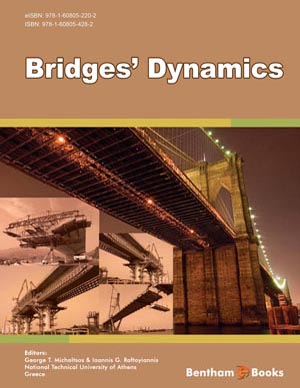Book Volume 3
Introduction
Page: 1-38 (38)
Author: Y.M. Cheng, J. H. Wang, L. Liang and W. H. Fung Ivan
DOI: 10.2174/9789811437397120030002
PDF Price: $30
Abstract
This chapter is an introduction to the requirement and the various problems that will be encountered during numerical modelling in geotechnical engineering. A large scale tunneling work in Australia will be used to illustrate the necessity to use numerical methods in some real life engineering problems. After that, the authors will introduce a series of numerical problems that may be encountered during the use of commercial engineering programs. Such problem cases may arise from various sources, and engineers are strongly advised to understand the basic principle of each commercial program and to assess the program output with care before accepting the results of analysis. Finally, some of the more important governing differential equations for geotechnical problems are discussed.
Numerical Methods in Geotechnical Engineering
Page: 39-358 (320)
Author: Y.M. Cheng, J. H. Wang, L. Liang and W. H. Fung Ivan
DOI: 10.2174/9789811437397120030003
PDF Price: $30
Abstract
Finite element method is the most popular and important numerical method in geotechnical engineering analysis and design. In this chapter, the basic formulation for finite element method will be introduced, followed by the various procedures in the actual implementation of the method which are illustrated by several sample Fortran programs. The style of Fortran programming, mesh generation, bandwidth/profile minimizer as well as the development of modern thick plate element are used for the illustration of the various techniques required in developing a finite element program.
Plasticity, Limit Equilibrium and Limit Analysis Methods in Geotechnical Engineering
Page: 359-535 (177)
Author: Y.M. Cheng, J. H. Wang, L. Liang and W. H. Fung Ivan
DOI: 10.2174/9789811437397120030004
PDF Price: $30
Abstract
In this chapter, the ultimate limit state of a system is considered by means of limit equilibrium, plasticity slip line method, limit analysis and DLO methods. The basic plasticity formulation for the slip line method is given, which is applied to some classical geotechnical problems. Following this, the three major geotechnical problems are unified under the extremum principle by the plasticity formulation. There is also discussion on the basic formulation for the DLO method and the limitations of the method or the commercial program.
References
Page: 536-571 (36)
Author: Y.M. Cheng, J. H. Wang, L. Liang and W. H. Fung Ivan
DOI: 10.2174/9789811437397120030005
Subject Index
Page: 572-583 (12)
Author: Y.M. Cheng, J. H. Wang, L. Liang and W. H. Fung Ivan
DOI: 10.2174/9789811437397120030006
Introduction
Numerical Methods and Implementation in Geotechnical Engineering explains several numerical methods that are used in geotechnical engineering. The first part of this reference set includes methods such as the finite element method, distinct element method, discontinuous deformation analysis, numerical manifold method, smoothed particle hydrodynamics method, material point method, plasticity method, limit equilibrium and limit analysis, plasticity, slope stability and foundation engineering, optimization analysis and reliability analysis. The authors have also presented different computer programs associated with the materials in this book which will be useful to students learning how to apply the models explained in the text into practical situations when designing structures in locations with specific soil and rock settings. This reference book set is a suitable textbook primer for civil engineering students as it provides a basic introduction to different numerical methods (classical and modern) in comprehensive readable volumes.












